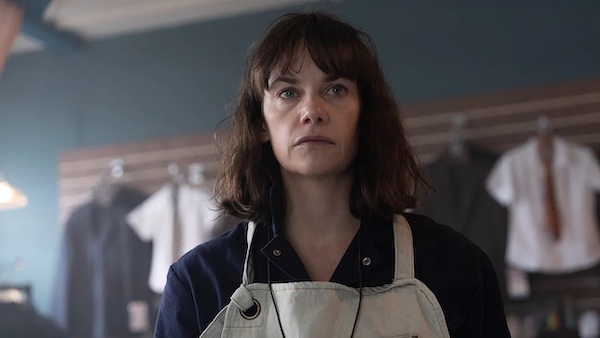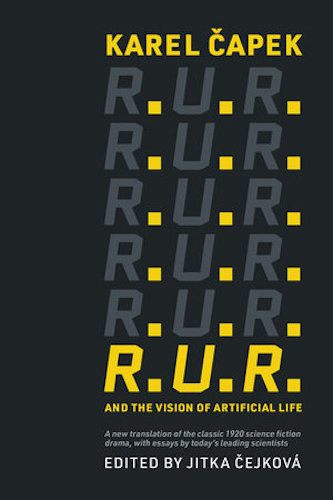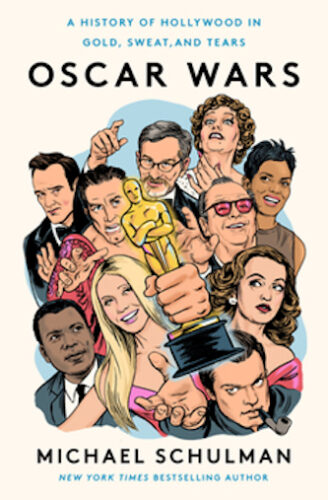February Short Fuses — Materia Critica
Each month, our arts critics — music, book, theater, dance, television, film, and visual arts — fire off a few brief reviews.
Classical Music
 Emily Dickinson remains one of the vital spirits of her age. A century and a half later, readers still devour her poems and letters, and composers of diverse inclinations have found inspiration in her imagery and wondered about her life, views, and philosophy.
Emily Dickinson remains one of the vital spirits of her age. A century and a half later, readers still devour her poems and letters, and composers of diverse inclinations have found inspiration in her imagery and wondered about her life, views, and philosophy.
Eric Nathan’s Some Favored Nook, a song cycle based on Dickinson’s life and that of her devoted friend, Civil War colonel Thomas Wentworth Higginson, has just received its first recording, with renowned vocalists Tony Arnold (soprano) and William Sharp (baritone), and pianist Seth Knopp. The brilliant, concise libretto was fashioned by Mark Campbell from Dickinson’s letters to Higginson and from Higginson’s published reflections on her and on the war to end slavery. Higginson’s led the first of several famous “Colored Regiments” (the “1st South Carolina”) fighting for the Union. Another (the “54th Massachusetts,” led by Robert Gould Shaw) is memorialized in the deeply moving Saint-Gaudens sculpture on the Boston Commons, a statue that, in turn, inspired a piece of music: the first movement of Ives’s Three Places in New England.
Inserted, like jewels, are delicious verses by the poet, often less familiar ones, though lovers of Aaron Copland’s songs will delight at Nathan’s fresh setting of “There came a wind like a bugle.” An online site allows one to listen to the whole recording or watch a two-minute video. The recording is also available as a digital download, with an excellent booklet offering the texts and essays — all in all, a riveting experience!
Nathan (b. 1983), a new composer to me, teaches at Brown University and was recently named Artistic Director of Collage New Music, “Boston’s longest-standing contemporary-music ensemble (now in its 51st season).” Some Favored Nook is one of the most approachable and communicative works I have encountered in recent years. The music matches the shifting moods of the texts, evoking the intensity of war as grippingly as the mysteries of poetic creativity. Much praise should go to the three brilliant performers, who are recorded vividly — I felt as if they were singing and playing, often quietly and thoughtfully, for me alone.
— Ralph P. Locke

Bedrich Smetana’s Má vlast boasts no shortage of great recordings, including from the Czech Philharmonic Orchestra (among the ensemble’s discography are outings of the work with Jiří Bělohlávek, Charles Mackerras, and Rafael Kubelik). So Semyon Bychkov’s new account of this cycle of six tone poems celebrating Czech culture with the group has some company — as well as a high bar to match.
Sonically and technically, though, conductor and orchestra are on perfectly firm footing. The Czech Philharmonic plays this music with a sense of ownership that at times (like in the climax of “Vysehrad”) is downright thrilling.
While the ensemble’s tone is consistently plush and luxurious, there’s never a sense of things settling down and becoming complacent. Rather, the orchestra’s attention to nuances of dynamics and articulation — not to mention good balances — ensures that the playing sounds eminently lively and fresh: so charismatic is the dance of woodwinds over the opening bars of “Vltava” that one can almost see the sun glinting off the waves of the Moldau.
Where Bychkov’s account of the piece really stands out from the Philharmonic’s earlier recordings is in its spaciousness: though tempos never feel slow, they certainly don’t push too hard. Yet, while one might wish for a bit more energy at times over the first half of “Sarka” and in “Tabor,” there’s a rightness to the conductor’s approach to this music, an impression that’s only enhanced by the attentiveness of the orchestra’s playing.
Pentatone’s engineering is warm and resonant, capturing many of the score’s little details with precision. The end result, then, is some wonderful, affirming Smetana from a pairing that, these days, is riding deservedly high.
— Jonathan Blumhofer

Pianist Igor Levit made his name playing the Beethoven piano sonatas. On the merits of Lieder ohne Worte, his new Sony Classical recording of excerpts from Felix Mendelssohn’s keyboard miniatures, one hopes he’ll turn his attentions fully to that composer next.
The immediate reason for this release relates to current events: it was taped in the aftermath of the October 7 attacks in Israel and proceeds from the album’s sales go to support a pair of Berlin-based organizations that fight antisemitism. Regardless, the disc’s an artistic accomplishment: these 14 movements from six of the eight books of “Songs without Words” are shaped with riveting, at times palpable, intensity.
Not that they want for beauty, warmth, or delicacy. Those qualities all emerge readily. But Levit mines a blend of soul, melancholy, drama, and quiet seething that one rarely encounters — let alone thinks of — in Mendelssohn’s solo piano music.
He shapes certain of these selections with astonishing power. In the pianist’s hands, the E-flat major movement from Book 2 boasts a world of light and shade. Rhythm, too, is fundamental, notably in Book 4’s “Folksong” and the implacable tread of Book 5’s “Funeral March.”
At the same time, there’s often a radiant play of colors at work. The “Venetian Gondola Song” from Book 2 shimmers eerily, while Book 3’s gorgeous “Duet” unfolds with urgency. Equally striking is the mix of weighty bass, piercingly accented dissonances, and floating lyrical lines in Book 4’s “Sadness of Soul.”
In this context, the closing selection, Charles-Valentin Alkan’s “La chanson de la folle au bord de la mer” functions as an ominous benediction: glowering, thudding chords sounding in the distance with a sweet, innocent tune unfolding above. It’s a masterstroke of programming and ensures that this short release (it lasts just 43 minutes) lingers long in the memory.
— Jonathan Blumhofer
Film

A scene from in water, a film written, directed, produced, photographed, scored, and edited by Hong Sang-soo.
Advance warning: the 61-minute in water (screening at Cambridge’s Harvard Film Archive on February 9, 25, and March 3) ends on a note that makes one rethink the preceding hour. Over the past decade, the prolific South Korean film director Hong Sangsoo has settled into a familiar cinematic groove, making at least two low-budget films a year. Though admired by critics, he is increasingly being criticized for repeating well-worn tropes and devices. Hong aficionados will recognize his habitual strategies in his latest effort, which is a film about filmmaking. Still, in water skips some of the director’s standbys, such as two-part structures and scenes of his characters getting drunk and arguing. And it makes one major change. Reflecting both Hong’s declining vision and his love of impressionist painting, the cinematography is out of focus in almost every scene.
An actor (Shin Seokho) who wants to become a director has traveled with two friends (a cameraman and actress) to Jeju Island to shoot a short film. He feels passionately about the project: he struggled to save up the production money. Without a script, the trio go for walks near the sea, looking for ideas. The wannabe director fictionalizes a talk he had with a woman who collects trash on the beach, staging it with his actress.
The surface of in water is aggressively banal. Conversation barely rises beyond small talk. Yet both the style and performances suggest an undertow of anger and depression. There’s even a hint that the former is directed toward the audience: we can’t perceive the subtleties of emotion because we can’t see the actors’ faces clearly. Once the film moves outdoors, the blurred cinematography grows even fuzzier. In water is determined that it will never look pretty. A discussion of a flower plays as a joke because it’s impossible for viewers to see what the characters are talking about. Then, surprisingly, the film moves into a completely different mode in its final five minutes, closing with a devastatingly mournful long take.
— Steve Erickson
Visual Art

One of the photos in the show Marian Anderson: Dressed for Success at the Wadsworth Atheneum.
The African-American contralto Marian Anderson is best known for a single performance: an open air concert on Easter Sunday, April 9, 1939, on the steps of the Lincoln Memorial in Washington, DC. First Lady Eleanor Roosevelt helped arrange the venue as an alternative to Constitution Hall, whose owners, the Daughters of the American Revolution, enforced a white performers only policy. The concert remains a landmark of the American Civil Rights Movement.
Anderson’s full career spanned four decades and hundreds of performances, including European tours and the first appearance of an African-American singer at the Metropolitan Opera. Most of her venues were concerts and recitals, though, where she didn’t have to share the spotlight and could (within limits) wear what she chose. This provides the context for Marian Anderson: Dressed for Success, an exhibition at the Wadsworth Atheneum (through April 25). The focus of the show is on two of Anderson’s specially designed concert gowns, along with several other formal costumes once worn by Hartford’s elite, including the legendary Beatrice Fox Auerbach, president of the city’s G. Fox Department Store, once the country’s largest privately owned store.
Anderson’s gold lamé Concert Gown (ca. 1935), attributed to Paris-based English designer Edward Molyneux, must have been stunning on stage, with its graceful, classical folds and shimmering surface. Its elegant dimensions suggest Anderson was considerably more svelte than the stereotypical opera diva. The show’s nod to diversity, however, dips into the surreal. The show’s mannequins come in a range of skin tones, disregarding the ethnicity of each gown’s original owner, and wear matching hairdos that seem to be crafted from wood shavings. All the heads have identical Grecian features except for the lone male figure, whose bald face is as featureless as an egg.
— Peter Walsh

Bowls by Warren Mackenzie. Photo: Lucy Lacoste Gallery
Archaeologists critically assess civilizations through an examination of their shards of ceramics. Pots, bowls, and figurines are, among their other uses, chronological statements of a society’s sophistication and evolution. Of course, ceramics are far more than just pottery and plates — included are tiles, pitchers, and even pieces of ornate sculpture. (Today, our personal decor is often accented by ceramic pieces.) Founded in 1990 by Lucy Lacoste, the Lucy Lacoste Gallery (in the center of Concord, Massachusetts) serves as a showcase for innovative and inspiring ceramics, ranging from pieces with beautiful surfaces to examples of geometric abstraction as well as pictorial and sculptural objects.
The gallery has been committed to clay as an art medium and has chosen to focus on showing contemporary, post-WWII ceramic artists, from the established to the emerging. The venue puts together thoughtfully curated exhibitions along with functional works by a roster of prominent, well-known potters. In addition to its ceramic shows, the gallery is also stimulating a dialogue about ceramics by presenting 2-D art.
The array of the ceramic pieces on display is wide-ranging. Aesthetic approaches vary greatly. The adroit mix of styles, techniques, and artistic character in the gallery’s one-person shows encourages knowledgeable and novice viewers to experience — both positively and perhaps negatively — the visceral power of quality handcrafted objects. In other words, Lucy Lacoste doesn’t expect everyone to appreciate or embrace all the pieces on view. With ceramics, like other visual arts disciplines, beauty is in the eye of the beholder. In this gallery, ceramic art is supposed to be provocative, challenging, and, at times, prickly.
Given the variety, there is something for everybody. The gallery’s prices for the work range from under a hundred dollars to several thousand. Because of the depth, innovation, and inclusiveness of the exhibits, museums continually purchase standout pieces for their permanent collections. Also enhancing the exhibitions: the gallery publishes handsome catalogues of the artworks on display. This is a place that not only adds to our appreciation of ceramics, but also contributes to the visual poetry of our own civilization.
— Mark Favermann
Television

Ruth Wilson in Showtime’s The Woman in the Wall. Photo: Chris Barr/BBC/ Paramount+/Showtime
In Ireland from the 18th to the late 20th century, the Catholic Church’s Magdalene laundries housed “fallen women.” What first began as rehabilitation for sex workers soon became hellish facilities where women worked in sweltering laundries. “Fallen women” were soon expanded to include unmarried mothers, petty criminals, mentally disabled women, and women considered too flirtatious, promiscuous, or even too pretty.The Magdalene laundries were more about exploiting labor than offering assistance. With few options available to them, many unwed mothers entered the facilities only to have their children taken away.
Showtime’s latest thriller, The Woman in the Wall (first aired on BBC), is directly connected to the Magdalene laundries. In a quaint village in Ireland in 2015, Lorna (Ruth Wilson) is a sleepwalker, the resident who is known for not “being all there.” One morning, Lorna discovers a woman’s corpse in her home. Unsure of whether or not she may have killed during a somnambulistic haze, she hastily stuffs the body away in her walls. Meanwhile, Detective Colman (Daryl McCormack) has arrived from Dublin to investigate the murder of a local priest. These two stories interweave in unexpected ways, creating a unified, and disturbing, thriller.
While McCormack commands the screen as no-nonsense Detective Cloman, Lorna’s story is consistently compelling. Lorna had been sent to a Magdalene asylum in the ’80s as a pregnant teenager. As an adult, her trauma haunts via hallucinations and flashbacks, the latter particularly devastating, visions that graphically evoke the psychological abuse of those who were subjected to the Magdalene laundries. Few films and TV shows have dared to capture what these asylums looked, felt, smelled, and sounded like. Without these flashbacks, The Woman in the Wall might have come across as another run-of-the-mill crime procedural. But, with them, this is a memorable voyage into the depths of Lorna’s anguish.
— Sarah Osman
Jazz
 Can drummer/vibist Jason Marsalis play funky jazz fusion?
Can drummer/vibist Jason Marsalis play funky jazz fusion?
Sorry to shortchange album leader Christian Fabian, a fine electric bassist with six of his own CDs and numerous recordings with many others, but when you hire a Marsalis for a fusion gig, that’s what’s going to raise the eyebrows. But this is the question raised by the trio album Hip to the Skip (Spicerack).
This is the Jason Marsalis who grew as a musician under the stern eyes of father Ellis and brother Wynton (Branford gets a pass for his brief funky diversion as “Buckshot Lafonque” in the 1990s). It’s the same Jason who got early training in Marcus Roberts’s trio, is the featured vibes player with the Lionel Hampton ghost band, and who currently leads the “21st Century Trad Band.” Billy Cobham he is not.
But hey, this is the great thing about jazz — you stretch, you practice, you keep your ears open, you hang with diverse musicians, and you deliver what the gig demands. Yes, Jason recorded George Gershwin’s “Concerto in F” with the Marcus Roberts Trio and the Saito Kinen orchestra, but here he’s laying down the fatback with power and style. And on “Incognito,” he’s still swinging hard behind Fabian’s irresistible walking bass.
This trio’s hook is providing contemporary, fusion-informed arrangements of some dusty standards, including “Moanin’,” “Mercy, Mercy, Mercy,” “When the Saints Go Marching In,” and “Four.” There are also originals from Fabian, Marsalis, and keyboardist Matt King. As well as Fabian and King are playing, it must be said, Marsalis is driving the trio with inventive propulsion and some deep grooves. Christian takes some excellent solos on electric bass, and while some of King’s synth patches sound a bit dated, he solos with feeling for the genre without overdoing it with prog fusion grandiosity.
Recommended, especially for the Marsalis cynics!
— Allen Michie

Game Changer (Teamchuck) grabbed my ear right away not because I care even slightly about video games, but because it just sounds great. The material is new, it swings, and the musicians sound like they’re having a blast.
This is the fourth album from the 8-Bit Big Band. Their shtick is giving tunes from old video games the full big band treatment. On Game Changer, they add nearly a full orchestra. On tunes like “Can You Feel the Sunshine?,” a trite ditty from a Sonic the Hedgehog game becomes an awesome full-scale Broadway showstopper.
I’m not a gamer, so I’m hearing this fresh with no nostalgia. And it mostly holds up. Many of these little jingles from video games are concentrated nuggets of pure catchy melody. “Pollyanna” from the Mother/Earthbound game, for example, is loaded with hooks. Vocalist Alan H. Green brings a gospel touch, backed by a choir and close to 90 musicians, delivering convincingly the sunny optimistic lyrics. The original is a saccharine children’s song.
Tributes keep the music connected to familiar jazz and pop styles. Vocalist Benny Benack III makes “You Wouldn’t Know” (from a Lego game) sound like Harry Connick and his band, or more generously, Sinatra and Basie. “I Wanna Take You for a Ride” (originally a mere 15-second loop) has a funky horn arrangement that sounds like Tower of Power. Jonah Nilsson on “Last Surprise” has a strong Stevie Wonder influence.
Not all of it works with this maximal treatment, and the ballads can limp into smooth jazz territory. But leader and arranger Charlie Rosen earns praise for his imagination and creativity, joining the tradition of jazz musicians who spun gold out of nursery rhymes and novelty songs of the day (see Louis Armstrong transforming “Jeepers Creepers”). Next level achieved!
— Allen Michie
Rock

Living Colour’s Vernon Reid and Corey Glover at Angel City Music Hall. Photo: Paul Robicheau
The chance to catch Living Colour at a small New Hampshire club would be novel enough. But add a snowstorm that whittled a sold-out show in half to a crowd of less than 200 at Manchester’s Angel City Music Hall (resembling a Hard Rock Café with its rock memorabilia) and fans surely won’t erase that memory. The band seemed to appreciate Sunday’s turnout and the crowd basked in 90 minutes of Living Colour, which has been opening for Extreme with shorter sets.
One plus of a full set: a dozen selections from 1993’s Stain (the band’s heaviest, darkest album), including its first eight songs in order, peaking with the frisky “Bi,” double-time “Mind Your Own Business” and a crunching “Auslander.” After singing “Everybody loves you when you’re bi,” frontman Corey Glover engaged fans who countered the state’s political stereotypes in call-and-response shouts of “Everybody!” that became a running bit.
In its blend of metal, funk, and jazz fusion, Living Colour remains (un)hinged on Vernon Reid’s blizzardy guitar, and that held true with his scorching, spidery runs cut by whammy bar and pedal swoops — and atmospheric swells in “Nothingness.” Bassist Doug Wimbish similarly manipulated his axe with finger-tap picking and sonic accents — and nodded to his hip-hop days in the Sugar Hill house band, leading a medley with “White Lines” and “The Message.” And drummer Will Calhoun anchored the attack, flexing his toms and cymbals throughout.
Yet this was Glover’s night. He delighted in the intimate rapport, and his rendition of “Open Letter to a Landlord” slayed, a chance to show off his gospel pipes in a call for neighborhood pride that could resonate in urban New Hampshire as well as the New York boroughs. By the time Living Colour wrapped up with its prophetic hit “Cult of Personality” and a thrashing “Time’s Up,” the quartet had satiated its fans, who were likely thinking it was time to clear snow off the car.
— Paul Robicheau
Books
 Czech novelist, journalist, and playwright Karel Čapek’s apocalyptic comedy R.U.R: Rossum’s Universal Robots premiered on stage in 1920. The play is credited with inventing the term “robot,” though there was an almost immediate misunderstanding. The plot’s autonomous creatures were made out of synthetic protoplasm — they are not mechanical. Created by a mad materialist scientist and his entrepreneur son, the humanoids could be manufactured cheaply and in bulk; they were developed to make life easier by taking on most of mankind’s grunge work, including as combat soldiers. The disastrous outcome of this comfortably profitable arrangement: the synthetic humans eventually rebel against their clueless masters.
Czech novelist, journalist, and playwright Karel Čapek’s apocalyptic comedy R.U.R: Rossum’s Universal Robots premiered on stage in 1920. The play is credited with inventing the term “robot,” though there was an almost immediate misunderstanding. The plot’s autonomous creatures were made out of synthetic protoplasm — they are not mechanical. Created by a mad materialist scientist and his entrepreneur son, the humanoids could be manufactured cheaply and in bulk; they were developed to make life easier by taking on most of mankind’s grunge work, including as combat soldiers. The disastrous outcome of this comfortably profitable arrangement: the synthetic humans eventually rebel against their clueless masters.
Given fears that AI may go rogue, you would think there would be a number of productions celebrating the centennial of this humorously nihilistic fable, a futuristic update of Frankenstein. But there have only been scattered professional efforts; perhaps its clairvoyance about mankind’s hubris toward extinction is too chillingly relevant.
Thankfully, the MIT Press has come out with R.U.R. and the Vision of Artificial Life, which makes a powerful case for staging the script via a lively new translation and 20 lucid essays (edited by Jitka Čejková) that feature scientists chewing over a slew of fascinating and terrifying conundrums (ethical/scientific/moral) raised by the text. A couple of the contributors think that R.U.R. is dated, but most of the meditations find the play cheekily prophetic: “Čapek’s decision to give his robots a biochemical basis … might turn out to have been rather prescient, especially judging from growing interest in the concrete messiness of organic life in fields such as artificial life, embodied cognition, soft robotics, and synthetic biology.” As for the script’s continued political punch, one scientist nails it: “Čapek commented on how the industrial revolution made machines lifelike and workers machinelike.” Čapek’s far-seeing tragicomic satire blurs the lines between the human and the biomechanical.
— Bill Marx
 Movies have always been a tug-of-war between art and commerce, so it makes sense that the Academy Awards, the most prestigious Hollywood awards show, with its 96-year history and a massive global audience, would garner the most vocal critics. Michael Schulman’s book Oscar Wars: A History of Hollywood in Gold, Sweat, and Tears (HarperCollins) is a selective history of the disagreements, oversights, and personal rivalries that the Oscars have generated since their inception in 1928. Schulman makes the case that awards have always been more than just a gaudy display of industry preening, gossip-mongering, and public relations. The author draws on his considerable research to argue that the inside industry squabbles and personal battles are not outliers — they reflect the devolution of public manners as well as the various strains, political and otherwise, of American hypocrisy.
Movies have always been a tug-of-war between art and commerce, so it makes sense that the Academy Awards, the most prestigious Hollywood awards show, with its 96-year history and a massive global audience, would garner the most vocal critics. Michael Schulman’s book Oscar Wars: A History of Hollywood in Gold, Sweat, and Tears (HarperCollins) is a selective history of the disagreements, oversights, and personal rivalries that the Oscars have generated since their inception in 1928. Schulman makes the case that awards have always been more than just a gaudy display of industry preening, gossip-mongering, and public relations. The author draws on his considerable research to argue that the inside industry squabbles and personal battles are not outliers — they reflect the devolution of public manners as well as the various strains, political and otherwise, of American hypocrisy.
Scandals shook the film industry during the ’20s: the transgressions included the death of 25 year-old Olive Thomas, who died after she injected her husband Jack Pickford’s syphillis medicine; the murder of William Desmond Taylor; and the accusations of rape against silent film comedian Fatty Arbuckle. How could the Tinsel Town moguls impose respectability? “I found the best way to handle [artists] was to hang medals all over them. If I got them cups and awards, they’d kill themselves to produce what I wanted. That’s why the Academy Award was created,” said Louis B. Mayer in 1927.
For nearly 100 years, the prize and its ceremony have energized Hollywood rivalries among executives, producers, directors, and actors. By the ’70s, Schulman claims, the lunatics were taking over the supposedly august asylum, directors Robert Altman, Hal Ashby, and Milos Forman among them. In 1973, Sacheen Littlefeather spoke for Marlon Brando at the awards gala. For Schulman, her rejection of Brando’s Oscar was a “triumph of political activism …. that led to decades of political Oscar speeches.” By the late ’80s the show had been turned into kitsch, thanks to Allan Carr, who was eventually banished because of his over-the-top productions. A letter signed by 17 Hollywood luminaries claimed that the Oscars shindig had devolved into “an embarrassment both to the Academy and the entire motion picture industry.”
Recently, other even more degrading humiliations have come along, such as the #OscarsSoWhite movement, Harvey Weinstein’s conviction and imprisonment for sexual abuse, and last year’s banishment of Will Smith for slapping Chris Rock on the telecast. This book’s entertaining 500 pages, covering decades of bad, glitzy, and questionable behavior, will provide Oscar-watchers with a robust vision of guilty pleasures past.
— Tim Jackson
Tagged: "Game Changer", "Hip to the Skip", "in water"", 8-Bit Big Band, Angel City Music Hall, Christian Fabian, Czech Philharmonic Orchestra, Emily Dickinson, Eric Nathan, hollywood, Hong Sang-soo, Igor Levit, Jason Marsalis, Karel Čapek, Lieder ohne Worte, Living Colour, Lucy Lacoste Gallery, Marian Anderson: Dressed for Success, Michael Schulman, MIT Press, Oscar Wars: A History of Hollywood in Gold Sweat and Tears, Oscars, peter-Walsh, R.U.R: Rossum’s Universal Robots, R.U.R. And The Vision of Artificial Life, Ralph Locke, Ruth Wilson, Sarah Osman, Semyon Bychkov, Showtime, Some Favored Nook, The Woman in the Wall

Karel Čapek created the first work to feature artificial life as we know it. R.U.R. is not just a play; it is a blueprint for the next century of imagining cyber life forms. In a 1923 interview before the London premiere, he said:
“I wished to write a comedy, partly of science, partly of truth. The odd inventor in the play, Mr. Rossum [whose name translated into English signifies “Mr. Intelligence” or “Mr. Mind”], is a typical representative of the scientific materialism of the last century. His desire to create an artificial man — in the chemical and biological, not the mechanical sense — is inspired by a foolish and obstinate wish to prove God unnecessary and absurd. Rossum is a young scientist, untroubled by metaphysical ideas; scientific experiment to him is the road to greater industrial production. He is not concerned to prove but to manufacture. . . . Those who think to master the industry are themselves mastered by it; robots must be produced as though they are a war industry, or rather because they are a war industry. The product of the human brain has escaped the control of human hands. This is the comedy of science.”
The play’s other Rossum, the inventor’s nephew who markets the robots, is a type for Zuckerberg, Musk, and others with whom the public is alternately fascinated by or abominates. Such figures want an instant future. They think they can dominate the present so completely that the past can be erased as they make the future now.
This is a post-political totalitarian mindset. It has as much to do with social dominance as market control. Rossum produces synthetic people; they so closely resemble humans that they can be mistaken for them. They can also think for themselves. Early in the play, they are content working for humans, but the robots realize how completely the humans have come to depend on them and that the human birth rate has drastically declined. The robots rebel and the human race is destroyed. Nevertheless, the play ends on a hopeful note as two robots have fallen selflessly in love, and they seem to be a new Adam and Eve as the curtain falls. A murderous variation on this plot device occurs in the film Ex Machina (2014), which concludes with the android “Ava” killing her creator and escaping from the laboratory/mansion into a city.
All true — I didn’t have the column inches to go into the details of why this play is so prescient. Glad you did. That so few American theater companies bothered to stage the text during its centennial year is a sign of our homogenized times.
I would add that there are other plays and fiction by Čapek well worth getting to know — his nightmarish novel The Absolute At Large deals with a discovery of a limitless and renewable energy source that drives men mad. Among his plays in translation: The Insect Play, The Makropulous Case (immortality becomes a possibility) and The White Plague, which I wrote about during the pandemic because the drama deals with the intersection of disease and fascism. Methuen Drama has published a volume containing these three plays and R.U.R. The Absolute At Large is available from University of Nebraska Press/Bison Books. Adventurous theater companies and readers — avante!